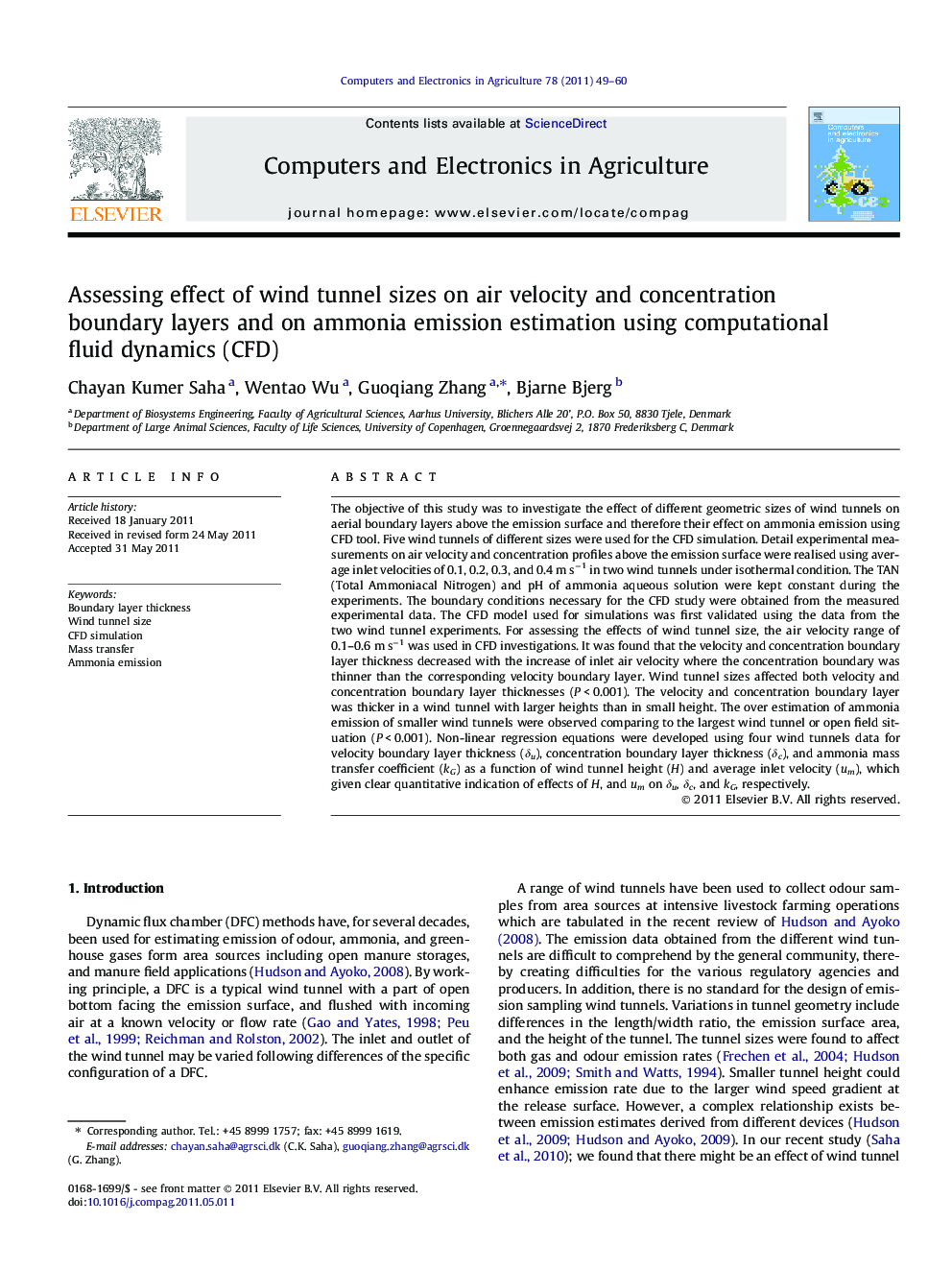| Article ID | Journal | Published Year | Pages | File Type |
|---|---|---|---|---|
| 84599 | Computers and Electronics in Agriculture | 2011 | 12 Pages |
The objective of this study was to investigate the effect of different geometric sizes of wind tunnels on aerial boundary layers above the emission surface and therefore their effect on ammonia emission using CFD tool. Five wind tunnels of different sizes were used for the CFD simulation. Detail experimental measurements on air velocity and concentration profiles above the emission surface were realised using average inlet velocities of 0.1, 0.2, 0.3, and 0.4 m s−1 in two wind tunnels under isothermal condition. The TAN (Total Ammoniacal Nitrogen) and pH of ammonia aqueous solution were kept constant during the experiments. The boundary conditions necessary for the CFD study were obtained from the measured experimental data. The CFD model used for simulations was first validated using the data from the two wind tunnel experiments. For assessing the effects of wind tunnel size, the air velocity range of 0.1–0.6 m s−1 was used in CFD investigations. It was found that the velocity and concentration boundary layer thickness decreased with the increase of inlet air velocity where the concentration boundary was thinner than the corresponding velocity boundary layer. Wind tunnel sizes affected both velocity and concentration boundary layer thicknesses (P < 0.001). The velocity and concentration boundary layer was thicker in a wind tunnel with larger heights than in small height. The over estimation of ammonia emission of smaller wind tunnels were observed comparing to the largest wind tunnel or open field situation (P < 0.001). Non-linear regression equations were developed using four wind tunnels data for velocity boundary layer thickness (δu), concentration boundary layer thickness (δc), and ammonia mass transfer coefficient (kG) as a function of wind tunnel height (H) and average inlet velocity (um), which given clear quantitative indication of effects of H, and um on δu, δc, and kG, respectively.
► Shear stress transport model can predict mass transfer process in boundary layer. ► Wind tunnel height affects on emission boundary layers and mass transfer process. ► The smaller wind tunnels decreased boundary layer thicknesses and increased emission. ► The effects of wind tunnel height were quantified by non-linear regression analysis.
